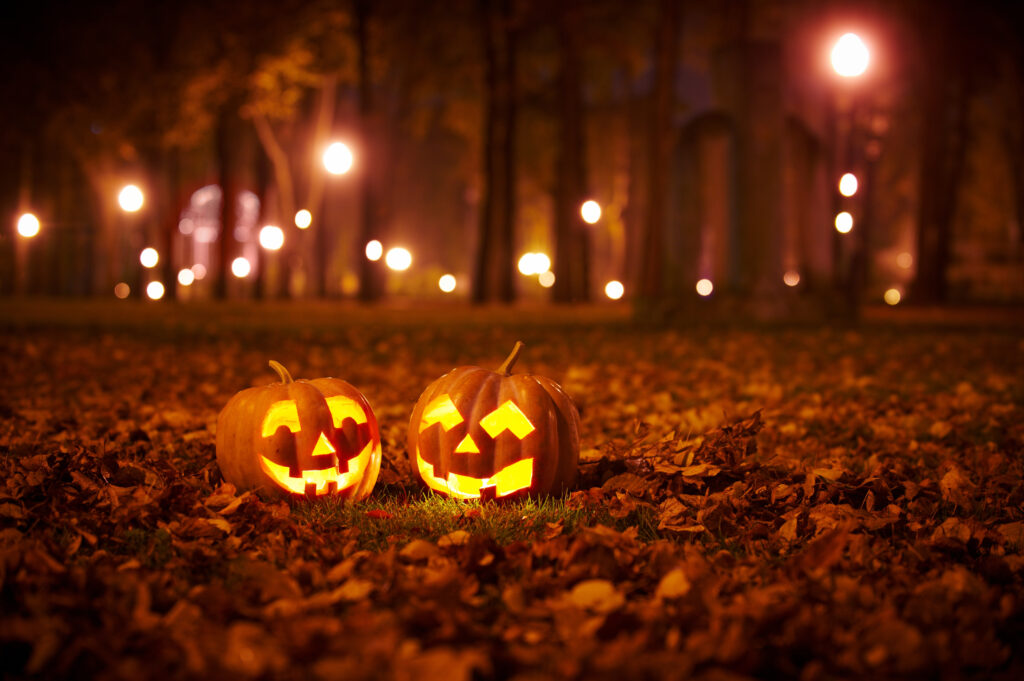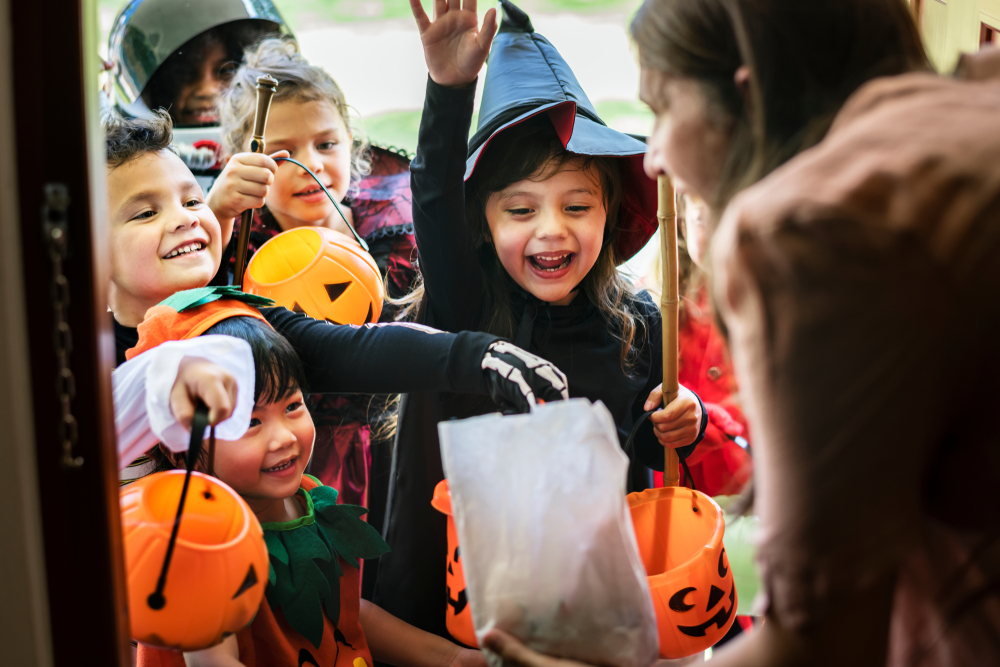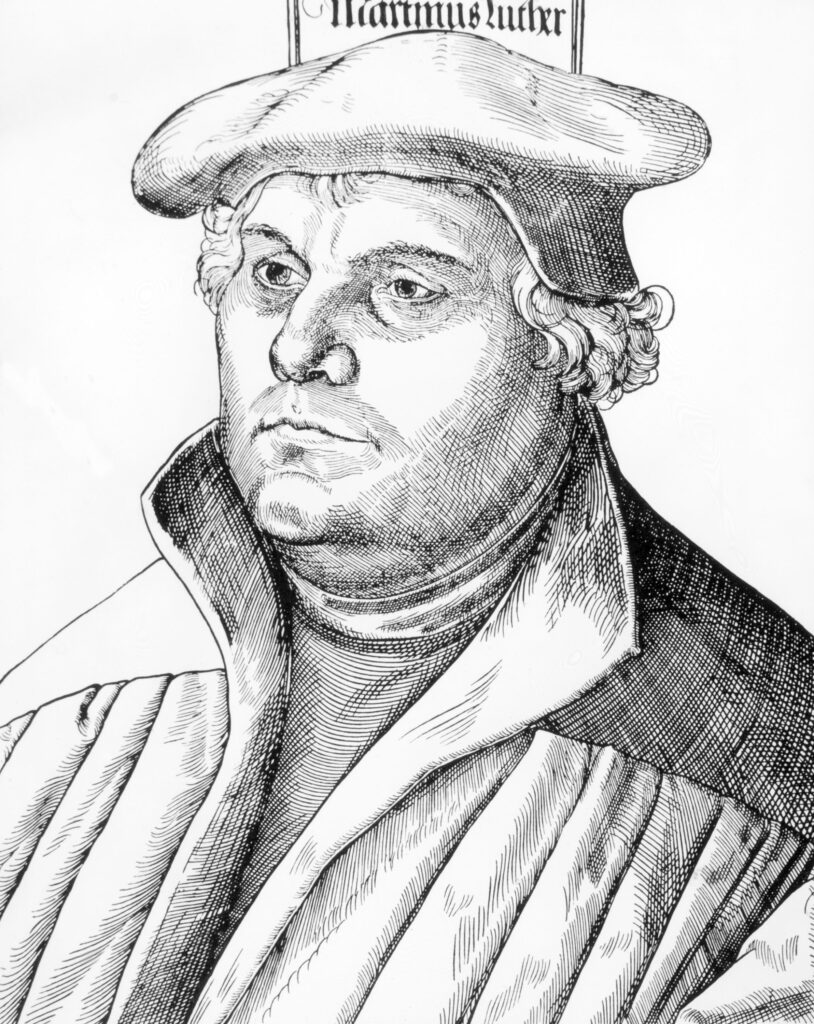

Senior Pastor of Sound of Heaven Church
The celebration of Halloween, a festival rooted in ancient pagan customs, remains a point of contention among many Christians today. The potential spiritual implications embedded in the festival’s origins often create a struggle for Christians who may wish to participate in this widely celebrated holiday. To many, Halloween is an innocent and jovial tradition of costumes and candy; to others, it’s a festival holding darker undertones that conflict with their faith. The question remains: How does one reconcile these differing perspectives of Halloween and Christianity? The journey to answer this takes us deep into the annals of history and the evolution of Halloween within Christianity.
The word “Halloween” originated from the Middle and Old English words for holy, with “hallow” meaning holy or saint. The term Halloween itself is believed to have been coined in the 18th century. However, the traditions and celebrations associated with Halloween have much older origins, dating back to the ancient Celtic festival of Samhain. This festival took place on October 31st and marked the end of the harvest season. People would light bonfires and wear costumes to ward off “ghosts”. Irish and Scottish immigrants brought many Halloween customs to North America in the 19th century and some of which we still celebrate today but most of it has been secularized by our American culture.
Halloween’s earliest origins trace back to the Celtic festival of Samhain, a pre-Christian celebration marking the end of the harvest season and the start of the long, dark winter. The Celts believed that on the eve of Samhain, the veil between the living and the dead was thinnest, allowing spirits to cross into the physical world. Bonfires were lit, and costumes were worn to ward off these spirits. Over time, as Roman influence spread across Celtic lands, Roman festivals such as Feralia (a day for honoring the dead) and Pomona (a celebration of the harvest) began to merge with Samhain customs, creating an amalgamation of traditions.
With the advent of Christianity in the late 4th century, efforts were made to Christianize these pagan traditions. The Church established All Saints’ Day, also known as All Hallows’ Day, on November 1, to honor all saints and martyrs. The night before became known as All Hallows’ Eve, which over time was shortened to the word “Halloween”. So yea, Halloween is a “Christian” term which reflects us honoring the men and women who gave their life for the cause of Jesus Christ. This was an attempt to replace the pagan Samhain festival with a Christian observance. So in other words, Halloween was an attempt to take a day the Pagans used to honor the dead and use it for those who were martyred for their faith.
Despite these Christian efforts, many of the old pagan customs persisted. Bonfires, costumes, and trick-or-treating have their roots in the original Samhain rituals. Carving pumpkins, which is a staple of Halloween today, was initially a practice using turnips in Britain and Ireland. Immigrants to America brought the tradition with them but switched to pumpkins, which were more abundant in the US.
The coexistence of Christian and pagan elements in Halloween has led to its complex history within Christianity. For some Christians, Halloween is seen as harmless fun, a time for children to dress up and collect candies. For others, the festival’s pagan roots and its associations with spirits and the dead make it a celebration to avoid, which when studying is a bit silly.
Before we dive any further into Halloweed and Christianity, I do want to point out that Halloween is not the only major celebration that has its roots in pagan traditions. Christmas, Easter, and other “Christian holidays” also bear traces of pre-Christian customs, which have been incorporated and adapted over centuries. The assimilation of these pagan festivals, symbols, and practices into Christian tradition is a testament to the flexibility and adaptability of Christianity, but it also raises complex questions about the intertwining of sacred and secular. Here is a list of some of the celebrations we partake in today in Christianity that have roots in paganism.
As you can see many of the practices listed above we use today and mainly have no problem with them at all. Unfortunately, our selective outrage can be a bit hypocritical at times. If we were to remove everything with a Pagan Origin out of our “Christian life”, I believe many things would look a lot different but that isn’t the point.
We as Christians have been free from religious bondage. To put it in a better way, we have been set free from thinking God is mad at us for every little thing we do that may seem wrong. I believe that we should participate on the celebrations of our communities, Halloween, 4th of July, Birthdays etc…but we should not worship them. I do not Worship America, I do not worship those whose birthday it is but I celebrate them! Only God should be worshipped, but things and people can be celebrated.

The tradition of trick or treating, an integral part of modern Halloween celebrations, traces its roots back to a medieval custom known as ‘souling.’ During All Souls’ Day, the poor would walk from village to village begging for ‘soul cakes,’ which were simple pastries given in exchange for prayers for the donor’s departed loved ones.
In the 19th century, this practice began to evolve into a more playful and communal activity. Children, rather than adults, started to take center stage. These children would go door to door, asking for food or money in exchange for songs, poems, or jokes. This was known as ‘guising,’ short for ‘disguising.’ The children would often dress in costumes, a practice reminiscent of the ancient Samhain custom of donning outfits to ward off spirits.
The tradition of ‘guising’ was brought to America by Irish and Scottish immigrants during the great immigration waves of the late 19th and early 20th centuries. Over time, it morphed into the distinctly American practice of ‘trick or treating.’ The “tricks” part of the phrase was initially quite literal — if no treats were given, the children would play tricks on the homeowner. Over time, however, the tricks became more symbolic, and the focus became the collection of candy and other treats.
In this way, the playful and candy-filled tradition that is trick or treating was born. Despite its pagan origins and the controversy that continues to surround Halloween within Christian circles, trick or treating has endured as a beloved Halloween tradition. Its historical journey, from a solemn medieval practice to a joyous community event, mirrors the broader evolution of Halloween.
The tradition of carving Jack O’ Lanterns, a hallmark of Halloween festivities, is steeped in the rich tapestry of Irish folklore. The tale recounts the story of a cunning man named Stingy Jack, who tricked the Devil into promising not to claim his soul. When Jack died, Heaven rejected his mischief-filled soul, and the Devil, bound by his promise, refused him entry into Hell. Jack was condemned to roam the earth for eternity, with only a burning coal (given by the Devil) to light his path. He placed this coal in a carved-out turnip, creating the original Jack O’ Lantern.
The Irish began carving faces into turnips and placing them in windows to ward off Stingy Jack and other wandering evil spirits. This practice was an integral part of Samhain, reflecting the ancient belief in the thinning of the veil between the living and the dead. Turnips, being plentiful and easy to carve, served as the primary medium for these early Jack O’ Lanterns.
When Irish immigrants arrived in America during the 19th century, they discovered that pumpkins, native to the New World, were larger and easier to carve than turnips. As a result, pumpkins quickly replaced turnips as the preferred canvas for the Jack O’ Lantern tradition. The carving of pumpkins has since become synonymous with Halloween, echoing the echoic tale of Stingy Jack and the age-old custom of warding off malevolent spirits.
The practice of carving Jack O’ Lanterns illustrates the dynamic nature of cultural traditions. Originating from an Irish folktale and evolving with geographical and material shifts, the Jack O’ Lantern has transformed from a superstitious emblem into a creative expression synonymous with Halloween. This tradition, like many aspects of Halloween, stands as a testament to the enduring influence of ancient customs on contemporary celebrations.
As Christianity began to take root in Roman-controlled territories during the 4th century AD, there was a strategic move by the Church to Christianize popular pagan festivals. This was an effort to make the new religion more palatable and familiar to converts. This really is a great Evangelistic tool. As long as it doesn’t compromise our morals, we are called “to be all things to all men so we might save a few.” One of these adopted celebrations was Samhain, which eventually became known as All Hallows’ Eve, or Halloween.
All Hallows’ Eve was instituted by Pope Gregory III in the eighth century. The Pope declared November 1 as a day to honor all saints and martyrs, known as All Saints’ Day or All Hallows’ Day. The evening before All Hallows’ Day, which marked the start of the celebration, thus became All Hallows’ Eve. This particular time of year was chosen to coincide with, and Christianize, the established pagan festival of Samhain.
The primary goal of All Hallows’ Eve was to replace the pagan tradition of honoring the spirits of the dead with a Christian sanctioned observance. The Church encouraged prayer and preparation for All Saints’ Day. Observing All Hallows’ Eve was a way for Christians to honor all those who had attained the beatific vision in Heaven, that is, to honor every saint, known and unknown.
In practice, however, many of the old customs linked with Samhain persisted, influencing the practices associated with All Hallows’ Eve. The carving of turnips, the lighting of bonfires, and the wearing of costumes, now done to honor saints and martyrs, were initially part of the Samhain tradition to ward off spirits. As Christianity spread and different cultures continued to merge, these practices evolved and were retained as part of the All Hallows’ Eve tradition.
All Hallows’ Eve emerged as a mix of old and new, combining elements from both pagan and Christian traditions. (To note, even the “christian traditions associated with all hallows ever are just celebrations. They are not “real” in the sense that God has commanded us to do this.”) The observance of All Hallows’ Eve served a dual purpose; while it assisted in the transition from paganism to Christianity, it also allowed the Church to honor all saints and martyrs. Over time, the festival evolved further, eventually culminating in the modern-day celebration of Halloween. Its historical roots, still traceable in today’s practices, highlight the adaptive nature of cultural traditions and the enduring influence of the past.
Contrary to popular belief and the sensational portrayals in media and pop culture, Halloween is not the most ‘demonic’ night of the year. This misconception largely stems from misunderstandings and fear-driven narratives about the holiday’s pagan origins and its association with symbols and rituals often misinterpreted as ‘evil’ or ‘satanic’.
Firstly, the claim that Halloween is a night of widespread witchcraft and demonic activity lacks concrete evidence. While some practitioners of modern pagan and witchcraft traditions, such as Wicca, consider Halloween (Samhain) a special time of year, their observances are generally focused on respect for the natural world, ancestral reverence, and the changing seasons, not on summoning evil or causing harm. I do want to make this clear. The Bible clearly tells us to stay away from witchcraft, wicca etc but according to the American Religious Identification Survey, Wicca is a peaceful, nature-oriented faith that promotes respect for all beings and the celebration of seasonal cycles and life transitions. Again, although no prescribed by God, the nature of the religions is not “evil.”
Do not turn to mediums or seek out spiritists, for you will be defiled by them. I am the LORD your God.
Leviticus 19:31
"Let no one be found among you who sacrifices their son or daughter in the fire, who practices divination or sorcery, interprets omens, engages in witchcraft, or casts spells, or who is a medium or spiritist or who consults the dead."
Deuteronomy 18:10-12
Secondly, the symbols and customs associated with Halloween often perceived as ‘demonic’ are, in fact, remnants of old traditions meant to ward off evil, not to invite it. For instance, the practice of carving Jack O’ Lanterns was originally a means to scare away malevolent spirits, according to Irish folklore. Similarly, costume-wearing derives from the ancient tradition of disguising oneself to avoid being recognized by any wandering spirits on Samhain.
Thirdly, it’s essential to recognize the cultural evolution of Halloween. Over centuries, what was once a solemn spiritual observance has been commercialized and transformed into a community-oriented celebration focused on costume parties, trick-or-treating, and decorative creativity. According to a report by History.com, modern Halloween celebrations are more about community and fun than any form of evil worship or demonic activity by almost 98% to less than 1%.
Lastly, the notion that Halloween is the ‘most demonic’ night of the year overlooks the fundamental Christian origins of the holiday. As discussed earlier, Halloween, or All Hallows’ Eve, was established by the Christian Church as a vigil before All Saints’ Day, a day to honor all saints and martyrs. This Christian perspective on Halloween emphasizes sacred remembrance and reverence, diverging significantly from the misguided portrayal of it as a night of demonic activity.
Halloween may be cloaked in a guise of ghosts and ghouls, but beneath the spooky facade, it is a time of community, creativity, and for some, sacred observance. The perception of this holiday as ‘demonic’ or inherently evil is a product of misunderstanding, misinterpretation, and, often, fear.
I also think we need to talk about the Elephant in the room and that is… it’s all FAKE! The reason for Samhain, the beliefs of the ancient Celts, Brits etc. None of it is real. It is made up. The realms are not “thin”. The realms of the dead are not overlapping with our Earthly realm. You don’t have to dress up to ward of spirits because they are not wandering. Stingy Jack is folklore, not a real life event…it’s all FAKE. Much like the tooth fairy, it’s fun to “play along” and have some fun without worrying about fake/non existant/made up stories of “opposition.”
The reason I bring this up is because it really does not matter how many witches “pray” or “cast spells” on that day. If they are chanting and summoning things that are not real, than what’s the issue? There is no day that belongs to Satan. Everyday belongs to God….even today! Today is the day the Lord has made so rejoice and be GLAD in it. Much like most of our famous hymnals were bar songs that we changed and transformed into songs or praise and worship, we have the power and dominion to have fun and take anything that may not be perceived as it is of God and use it for His Glory.
Besides, did you know one of the most powerful days in Christian history happened on…HALLOWEEN!?!? So much for opposition.

On October 31st, 1517, Martin Luther, an Augustinian monk and theology professor, undertook an action that would send shockwaves through the Christian world and precipitate a seismic shift within the Church. On this day, now celebrated as Reformation Day, Luther famously nailed his “Ninety-Five Theses” to the door of the Castle Church in Wittenberg, Germany. This public act was intended as a challenge to debate, but it sparked much more – a movement that would fundamentally reshape Christianity.
The “Ninety-Five Theses” was a detailed list of grievances against the Roman Catholic Church and its practices, particularly the sale of indulgences. Luther condemned this practice, arguing that the Church, by offering a financial pathway for the remission of sins, was distorting the true message of Christianity. He emphasized the doctrine of justification by faith alone (sola fide), asserting that salvation was a divine gift that could not be bought or earned.
Luther’s audacious act on that October day ignited the Protestant Reformation, a religious, political, and cultural revolution that fractured the Catholic Church’s monolithic influence over Europe. The Reformation led to the formation of numerous new Christian denominations, all of which rejected papal authority to different degrees. These included Lutheranism, founded by Luther’s followers, which emphasized a personal relationship with God and faith as the path to salvation.
This historical act on October 31st didn’t just change the landscape of Christianity; it also had enduring global impacts. Luther’s challenge to the Church’s authority inspired religious and secular leaders alike to question long-standing conventions, sparking a wave of independent thought and critical inquiry. His emphasis on the vernacular translation of the Bible democratized access to religious texts, promoting literacy and personal interpretation of the scriptures. Thus, Martin Luther’s actions on Halloween 1517 didn’t just revolutionize the Church; they forever changed the course of history.
The Movie “Luther” starring Joseph Fiennes
The decision for Christians to partake in Halloween is often a subject of debate, with views ranging from total rejection to full participation. However, it is important to remember that participation in Halloween festivities does not equate to worshipping the dead or dabbling in ungodly activities. After all, the Apostle Paul reminds us in Romans 14:14 (NIV), “I am convinced, being fully persuaded in the Lord Jesus, that nothing is unclean in itself. But if anyone regards something as unclean, then for that person it is unclean.” Meaning, it’s more about the intent behind the action rather than the action itself and it is up to the person to make that decision for themselves.
For Christians considering Halloween participation, one approach is to discern the difference between celebrating evil and simply participating in cultural traditions of fun and festivity. Paul reiterates in 1 Corinthians 10:31 (NIV), “So whether you eat or drink or whatever you do, do it all for the glory of God.” This can be interpreted to mean that as long as your participation does not compromise your values and your actions glorify God, it is permissible.
For Christians participating in Halloween, it is essential to remember the sovereignty and authority of God, even on a day that many associate with darkness. As written in 1 John 4:4 (NIV), “You, dear children, are from God and have overcome them because the one who is in you is greater than the one who is in the world.” This scripture reassures Christians that God’s power surpasses all, and His protection is unwavering – even on Halloween. Thus, when handled appropriately, Christians can partake in Halloween fun without compromising their faith.
Some of us get so caught up in this stuff that it robs us of living a fun and free life. What I am not saying is do whatever your flesh wants, but let’s be very clear on the things that are 100% not of God and what can be made of God. This takes a little wisdom.
Topics like this remind me of the builders that helped Nehemiah rebuild the temple. They loved the Lord and were pivotal in re building the Temple. But if you follow what happened to them afterwards, they got so fearful of “disobeying” God, they ended up making 300 laws of things you can and can not do and were completely useless. In fact, it was from their lineage were some of the main Pharisees came from.
Let’s not do that! Be FREE! Cmon now and lets pray!
Heavenly Father, I come before You today, seeking Your divine intervention to break away from the chains of religious bondage. I acknowledge that You are the source of all truth and freedom. I ask You to reveal any areas in my life where I’ve accepted religious traditions, rules, or philosophies that are not grounded in Your Word. Help me to discern between man-made doctrines and Your divine truths, and enable me to walk in the liberty that is found in Christ Jesus.
I renounce any legalistic practices or beliefs that have held me captive, replacing them with the grace and mercy extended to me through the sacrifice of Your Son. I proclaim my trust in the finished work of the Cross, rejecting any notion that my righteousness comes from anything but the blood of Jesus. I reject the lie that I can earn Your love or approval by my works, instead embracing the truth that I am loved unconditionally, declared righteous through faith, and justified by grace alone.
Finally, Lord, as I step into the freedom You offer, equip me to live as a testament to Your grace, to Your forgiveness, and to the transformative power of the Gospel. Let me be a beacon of Your love and a conduit of Your truth to those still ensnared in religious bondage. I declare that my life is not ruled by religious rituals, but by the Spirit of God, and through Him, I have the freedom to live out the abundant life promised in Christ. In Jesus’ name, I pray, Amen.
As we conclude this exploration of Halloween’s history and its connections to Christianity, it’s clear that the ties between this holiday and our faith are complex. We’ve unearthed a rich tapestry of traditions, from the ancient pagan festival of Samhain to the Christianized All Hallows’ Eve, and discovered how these customs continue to influence our modern-day Halloween celebrations. We’ve also examined Martin Luther’s historical act on Halloween 1517, a moment that forever altered the landscape of Christianity, and considered how Christians today can participate in Halloween without compromising their faith.
If you’re left with lingering questions or if anything we’ve covered has prompted deeper reflections about Halloween and Christianity, we encourage you to reach out. Our Church and website is not only for sharing information but also for engaging in open, insightful discussions about our faith and our traditions. We value your thoughts, your perspectives, and your inquiries, and we welcome the opportunity to explore and learn together.
Remember, the process of understanding our faith and all its intersections with our lives is a journey, not a destination. Whether it’s addressing concerns over Halloween participation or unpacking the profound significance of a historical event, each question asked is a step toward greater awareness and deeper faith. Don’t hesitate to make your voice heard – your questions matter, and we’re here to explore them with you.
© Sound of Heaven Church 2011- 2024